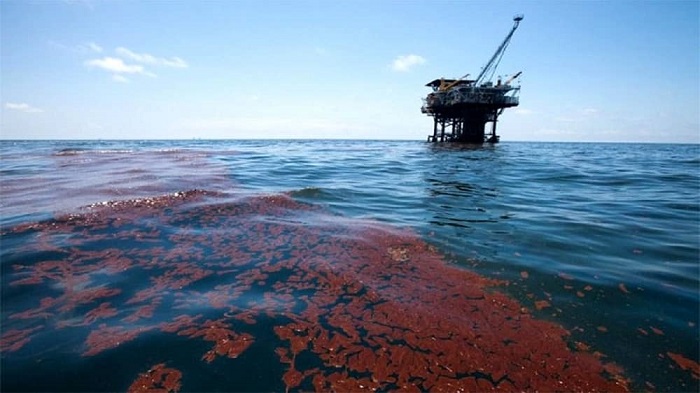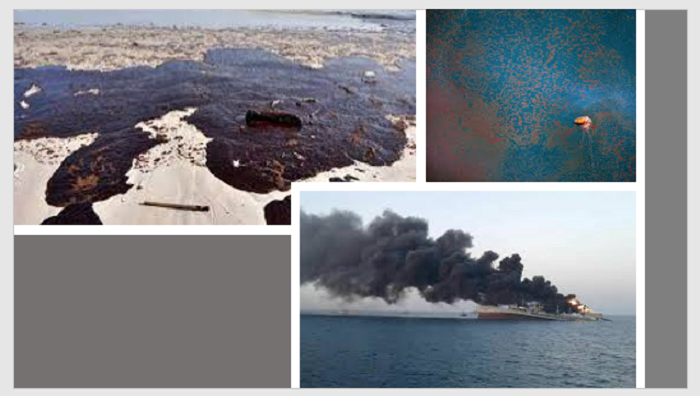
On August 28, state media reported an oil leak from a pipeline connecting Ganaveh Port to Khark Island in the Persian Gulf. Alarmingly, this is not a one-off incident; another pipeline near Kashar village in Bandar-e Khomeini exploded just days before.
These pipelines, in operation for over half a century, transport oil to Khark Island, Iran’s main oil export terminal. The effects of time have made the aging pipelines prone to leaks. Astonishing data from the semi-official ISNA news agency reveals that approximately one million tons of crude oil leak into the Persian Gulf each year.
Despite the mounting crisis, there seems to be a general apathy towards pipeline renovation or replacement, given the regime’s financial priorities. In September 2019, the region witnessed a massive oil leak that contaminated Bandar Ganaveh’s shores, but authorities took over a week to react. Such delays in response have historical precedents, with similar incidents in 2016 and 2009.

Iran also grapples with another environmental concern. The International Energy Agency highlights that Iran leaks around 7.5 billion cubic meters of methane gas yearly. This lost gas equates to a staggering $3 billion – approximately 10% of Iran’s public budget. Regrettably, unlike its neighbors, Iran lacks sophisticated monitoring systems for these leaks, resulting in reactionary rather than preventive measures.
Understanding the Impact of Oil Leaks
When crude oil spills into aquatic ecosystems, it poses a significant threat to marine life, seabirds, and aquatic species. Spills can be either stable or unstable. While unstable spills spread quickly on the water surface, stable spills sink deeper. The introduction of crude oil initiates various physical, chemical, and biological processes that can adversely affect marine ecosystems. Sun-fueled chemical processes break down oil, leading to floating tar masses, whereas sediments settle on the seafloor. Microorganisms then further break down the oil, potentially leading to oxygen depletion in the water, putting aquatic life at risk.
The larger implications of oil pollution in the marine food chain are not entirely known. However, such pollution in the Persian Gulf, a critical shipping route, has endangered the sea turtles in the region.
Who is Responsible?
Addressing these oil spills demands swift actions by expert teams. However, in Iran, accountability is elusive. Several organizations, including the Ports and Maritime Organization, Environmental Protection agencies, Fisheries, and the Ministry of Oil, operate in the domain. Yet, none appear to bear the primary responsibility for preventing marine pollution.
In view of the ongoing environmental challenges, addressing the root cause – the regime and its lack of proactive measures – seems paramount for safeguarding Iran’s environment.

MEK Iran (follow us on Twitter and Facebook), Maryam Rajavi’s on her site, Twitter & Facebook, NCRI (Twitter & Facebook), and People’s Mojahedin Organization of Iran – MEK IRAN – YouTu







